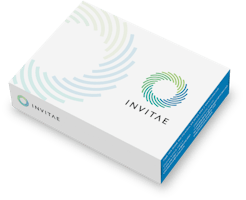
Invitae Niemann-Pick Disease Type C Panel
Test code: 06176 •
Test description
The Invitae Niemann-Pick Disease Type C Panel analyzes NPC1 and NPC2, two genes that are known to cause Niemann-Pick disease, type C (NPC), which is a lipid storage disorder. Biallelic variants in either of the two genes result in the same clinical disease. This panel is indicated for any individual in whom NPC is suspected based on clinical, radiologic, or laboratory findings.
Ordering information
Turnaround time:
10–21 calendar days (14 days on average)New York approved:
YesPreferred specimen:
3mL whole blood in a purple-top EDTA tube (K2EDTA or K3EDTA)Alternate specimens:
Saliva, buccal swab, and gDNA are also accepted.Learn more about specimen requirementsRequest a specimen collection kitClinical description and sensitivity
Clinical description:
Niemann-Pick, type C (NPC) is a lysosomal storage disease that primarily causes progressive neurovisceral degeneration. In contrast to the majority of lysosomal storage diseases, NPC is due not to an enzymatic defect, but rather to a disorder of intracellular lipid trafficking. NPC is distinct from Niemann-Pick, types A and B, which are due to defects in lysosomal acid sphingomyelinase.
NPC is extremely clinically heterogeneous, with variable ages of presentation (including among siblings), but 90% of patients will present with progressive neurodegeneration. There are five broadly accepted presentations of NPC: pre/perinatal (onset before three months of age), early infantile (onset between three months and two years of age), late-infantile (onset between two and six years of age), juvenile (onset between six and fifteen years of age) and adolescent/adult (onset after 15 years of age). The classic presentation occurs in middle to late childhood. Any or all of the clinical symptoms described below can be observed in patients with NPC.
Neurologic manifestations are often insidious and may initially present with subtle findings such as central hypotonia. Delayed speech and cerebellar signs (e.g., impaired gait, dysphagia) are common. Adult-onset cases often present with cerebellar ataxia. Supranuclear gaze palsy is a hallmark of the disease and has been observed in up to 80% of affected patients. Adults often present with psychiatric illness, such as schizophrenia-like psychosis, depression, and bipolar disorder. Juvenile-onset cases may have behavior problems. Progressive neurologic deterioration occurs in all cases, although adult-onset cases have slower progression. Visceral findings such as hepatosplenomegaly can also be present and are often observed prior to neurologic findings. Additionally, in patients with early-onset disease, or severe NPC2 mutations, pulmonary infiltration with foam cells also occurs.
Premature death occurs in all patients with NPC, most of whom have a life expectancy of 10–25 years. Those with early-onset neurologic symptoms tend to progress faster and have a shorter lifespan. Death is most commonly due to aspiration pneumonia.
Treatment for NPC is primarily symptomatic, but use of the substrate inhibitor miglustat has been approved in Europe and other countries.
Assay information
Invitae is a College of American Pathologists (CAP)-accredited and Clinical Laboratory Improvement Amendments (CLIA)-certified clinical diagnostic laboratory performing full-gene sequencing and deletion/duplication analysis using next-generation sequencing technology (NGS).
Our sequence analysis covers clinically important regions of each gene, including coding exons and 10 to 20 base pairs of adjacent intronic sequence on either side of the coding exons in the transcript listed below, depending on the specific gene or test. In addition, the analysis covers select non-coding variants. Any variants that fall outside these regions are not analyzed. Any limitations in the analysis of these genes will be listed on the report. Contact client services with any questions.
Based on validation study results, this assay achieves >99% analytical sensitivity and specificity for single nucleotide variants, insertions and deletions <15bp in length, and exon-level deletions and duplications. Invitae's methods also detect insertions and deletions larger than 15bp but smaller than a full exon but sensitivity for these may be marginally reduced. Invitae’s deletion/duplication analysis determines copy number at a single exon resolution at virtually all targeted exons. However, in rare situations, single-exon copy number events may not be analyzed due to inherent sequence properties or isolated reduction in data quality. Certain types of variants, such as structural rearrangements (e.g. inversions, gene conversion events, translocations, etc.) or variants embedded in sequence with complex architecture (e.g. short tandem repeats or segmental duplications), may not be detected. Additionally, it may not be possible to fully resolve certain details about variants, such as mosaicism, phasing, or mapping ambiguity. Unless explicitly guaranteed, sequence changes in the promoter, non-coding exons, and other non-coding regions are not covered by this assay. Please consult the test definition on our website for details regarding regions or types of variants that are covered or excluded for this test. This report reflects the analysis of an extracted genomic DNA sample. In very rare cases, (circulating hematolymphoid neoplasm, bone marrow transplant, recent blood transfusion) the analyzed DNA may not represent the patient's constitutional genome.
You can customize this test by clicking genes to remove them.
Primary panel
In addition to the primary test, clinicians can also choose to include LIPA, which causes lysosomal acid lipase deficiency. Deficiency of the LIPA enzyme can cause increased filipin staining, a finding commonly seen in Niemann-Pick type C. This gene can be added at no additional charge.
Chitotriosidase (chito) is an enzyme that can be elevated in some untreated lysosomal storage disorders such as Gaucher disease and Niemann-Pick types A, B, and C. The degree of elevation generally correlates with disease severity. Plasma chito levels are often utilized as a biomarker in the diagnosis and management of individuals with the aforementioned conditions. However, certain variants in the CHIT1 gene lead to absent or decreased chito levels (chito deficiency), limiting the utility of chito as an accurate biomarker unless genotype is available to aid in the interpretation of results. On its own, chito deficiency does not cause any human disease. This gene can be added at no additional charge.
Question about billing?
Find answers